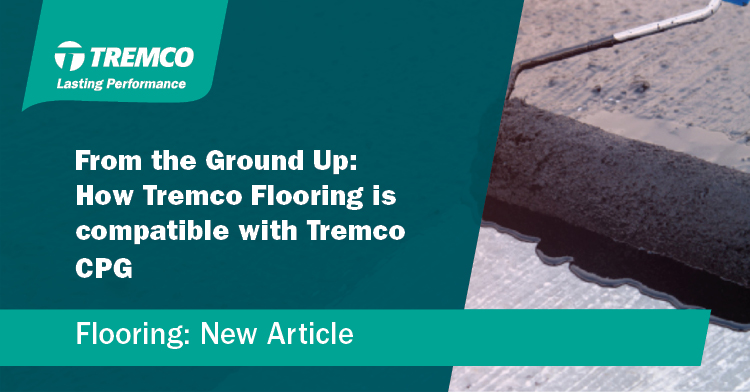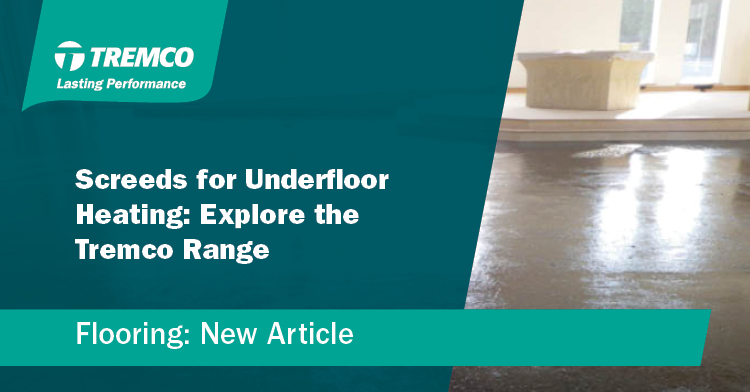Considering Sources of Moisture

Before moisture-sensitive flooring is laid on a subfloor base it is necessary to ensure, not only that the floor is constructed to prevent moisture from reaching it from the ground, but also that any excess water from construction is dissipated.
In this article, Tony Davis of Tremco Construction Products Group (UK) – manufacturers of Flowcrete and Tremco flooring products – provides an overview of some of the main issues to consider and the importance of taking an early view on the situation.
When it comes to installing floor finishes, excess moisture can be a real issue – seriously threatening the success of the project overall, with costly consequences.
Moisture in floors generally comes from one of two sources when the building is watertight.
The first is related to new build projects, where there can be constructional moisture contained within the newly installed subfloor.
The second scenario is where there is no DPM within the subfloor construction or it is deemed ineffective. This may be due to it having degraded or expired over time. This situation is usually encountered in older buildings.
Getting the right level
In existing buildings, it will be the ground floor will be affected by excess moisture.
In the case of moisture on a new build project, there is a chance that excess moisture can also affect the building’s upper floors as well as the ground floor.
Firstly, some research work is needed beforehand to establish the situation. This can be done by taking moisture readings as a starting point. There are various methods of testing and Tremco CPG UK can advise on the best way to achieve an accurate result.
Once readings have been taken, you can then decide what the next steps should be.
If it is found that readings are over 75% relative humidity, then the question can be asked - does the subfloor need an epoxy surface DPM or moisture vapour suppressant?
Traditionally, an epoxy surface DPM, such as Tremco ES100, has been used where readings are up to 97.9% relative humidity (theoretically 99.9%).
Before this can be applied it is vital that the subfloor is surface dry, even and contaminant free. If the surface is not even, pre-smoothing of the subfloor is recommended to ensure both the effectiveness and maximum coverage of the surface damp-proof membrane.
Once this is achieved, the epoxy DPM is then applied directly to the subfloor followed by a primer and then a smoothing compound. The selected floor covering is then adhered with a suitable Tremco flooring adhesive.
It’s worth noting that some Tremco smoothing compounds can be applied directly to the Tremco DPM without the requirement of a primer, but we’d strongly advise contractors to always contact the manufacturer for further guidance on this.
New build considerations
When readings are up to 95% relative humidity in a new build project, and there is an effective DPM installed under the subfloor, a moisture vapour suppressant can be used, such as Tremco ES600.
Once the subfloor is surface dry, even and contaminant free, two coats of ES600 should be applied. Once the first coat is fully dry a second coat should be applied at right angles to the first and allowed to dry.
Once the second coat is fully cured (usually 1 hour), the application of a suitable Tremco smoothing compound should be applied, followed by the appropriate adhesive for the floor covering, completing the project.
Best practice
For more detailed information and best practice, the British Standards, BS8203:2017 Code of Practice for the Installation of Resilient Floor Coverings is an excellent reference.
In Annex B of the document, consideration is given to hygrometer testing for dampness of concrete, cementitious and calcium sulphate bases.
In summary, the moisture levels in the building’s floors can be managed, but time should be taken in the early stages of a flooring project to fully understand the situation and avoid any potential flooring failures through the presence of moisture and damp.
Tremco can offer support and guidance to ensure contractors make the right decisions.











